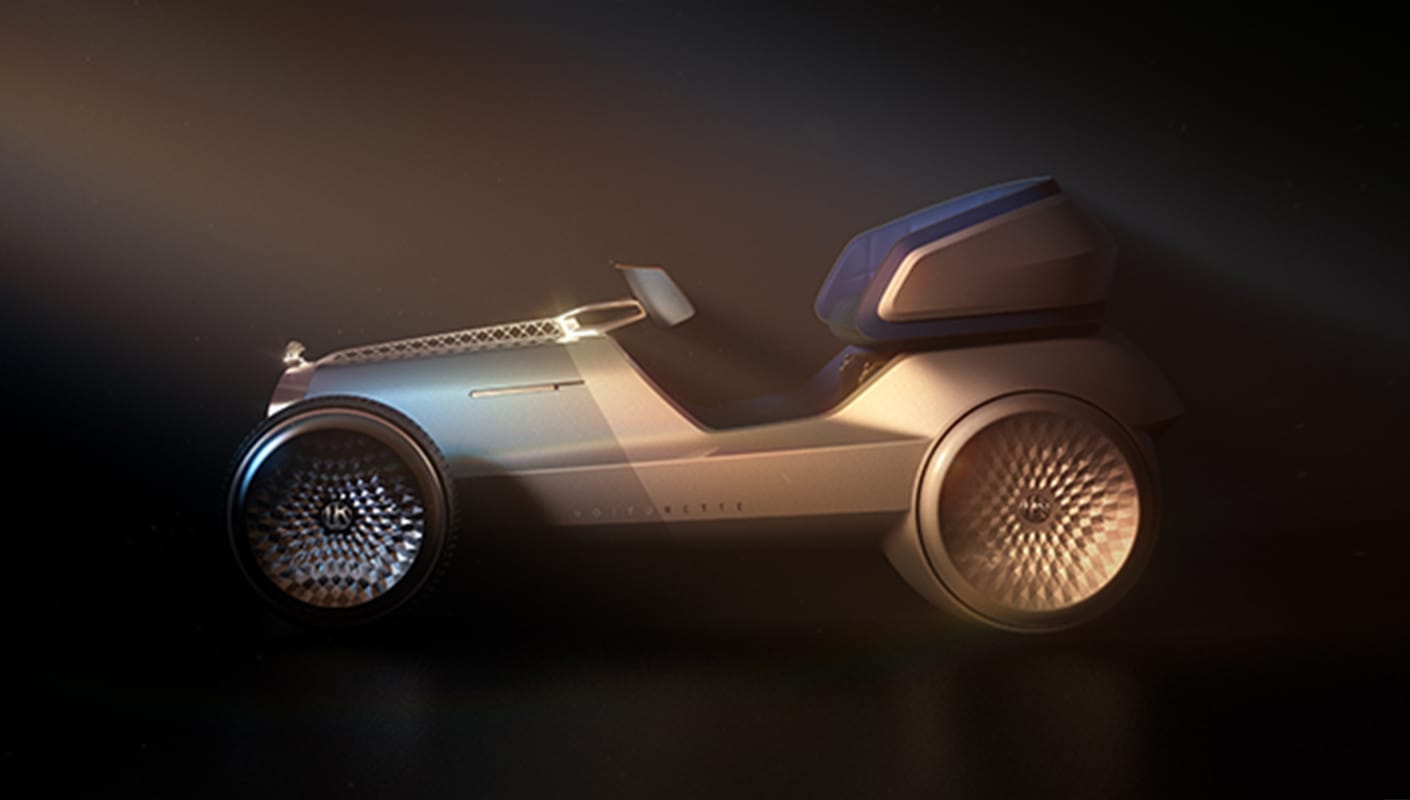Understand and perfect essential product design rendering techniques to enhance your 3D visualization skills and create stunning, professional-quality renders.
Achieving attractive product renders is a specialized process. Rendering artists are constantly seeking to improve their techniques and fine-tune their workflows, allowing them to constantly improve their artwork.
If you're aiming to enhance or refine your 3D product visualization techniques, you’re in the right place. In this article, we’ll explore some of the most effective strategies for creating high-quality product renders. This guide builds upon the concepts introduced in What is product rendering, serving as a valuable resource for any artist looking to master the art of product visualization.
Understanding the rendering techniques used in product design
Product design is a wide field. Some artists dedicate their visualization skills to only one type of industry, for example, automotive, furniture, or technology, implying that the tools, methods, and techniques may be different from one industry to another. However, knowing and mastering more than one technique will help you confidently face any project challenge.
When we are responsible for a product rendering project, it is important to categorize it first, then define the most convenient workflow and the appropriate techniques and tools to develop it.

Techniques for creating exceptional product design rendering
As previously mentioned, a crucial factor to consider is the product development phase. Product visualizations can be needed from the early stages of conceptualization, through material testing, animations, and simulations, all the way to creating high-quality images for promotion and marketing.
Handmade sketch-style rendering
In industrial design, new products begin their life from conceptual sketches, followed by volumetric explorations. 3D modeling software allows designers to achieve initial volumes for studies and analysis of the overall form, a fundamental phase for approval and the continuation of development of a physical prototype.
It is common to include these sketches and volumes as part of the creative process when presenting new products to directors, investors, or clients.
Product design sketching can create a visual interest and emotional connection from the beginning, and establish effective communication throughout the development process.
In addition, including industrial design rendering with a little art allows you to improve your presentations and make them more aesthetically pleasing.

Minimalistic renderings
Simplicity and clarity. Minimalistic renderings are characterized by simple elements and a limited color scheme. The objective is to avoid a visual overload and show only what is essential. These images usually convey a feeling of elegance and sophistication.
Using a minimalist approach, the most important features of the product, such as its design and materials, are highlighted, making it easy to contrast between different design options.
These renderings can be used to show any product without distracting or unnecessary elements. Minimalist renderings use relatively simple lighting and rendering setups.

Contextual rendering
Contextual renderings are a type of 3D product rendering, crucial in product design because they allow designers, developers, and stakeholders to visualize how a product will perform and appear in a real-world environment.
If you work with marketing agencies, contextual renderings are a common request, helping create marketing materials that enhance sales and keep customers engaged. Customers can imagine how the product will look and function in its own space.
Technically speaking, creating contextual renders can be a complex challenge for CG artists. Additional knowledge such as directing and scripting is required. Don't miss the opportunity to work on projects with filmmakers as you will gain valuable technical and artistic knowledge.

Interactive rendering
Interactive rendering is a real-time process that allows users to manipulate and visualize 3D visualizations while receiving immediate feedback on how these changes will appear. Companies can create interactive product demos that enable customers or stakeholders to explore a product virtually, providing a more engaging and immersive experience.
Unlike traditional rendering, which can take minutes or even hours to render a single frame, interactive rendering should instantly update the visual output. This represents another challenge for us as CG artists: optimization for an interactive experience.
Projects created for interactive rendering require carefully created assets, detailed 3D models with a minimum number of triangles, realistic materials based on a simple shading network, and adjusted-resolution textures.

Photorealistic rendering
The main goal is photorealistic 3D rendering. If we want to be professional CG artists, we must be able to produce photorealistic renderings that are indistinguishable from real photographs. Large firms, agencies, and product design companies use these images to enhance communication and market their big projects.
To create a photorealistic rendering, you should be able to simulate real-world lights, materials, textures, and cameras. Remember, your competitor is a real photograph. But be patient; mastering techniques takes time. This article is packed with tips for accurate renders: 11 tips for lighting renderings to boost photorealism.

Product Rendering Process
In the last article, we reviewed the process of creating a product rendering. An important component of this process is project information, which helps us propose and improve the product and keep our processes organized.
Best practices for efficient rendering workflows
Plan and conceptualize the product design before starting the rendering process. Don't make the mistake of starting a project in your 3D application; this is an easy way to be led to a conceptual dead end. Instead, start drawing ideas and diagrams that give you many routes to explore.
How to optimize rendering for faster results
Use rendering software that utilizes state-of-the-art new technology to deliver high-quality results efficiently. V-Ray is the most flexible rendering engine on the market today. Thanks to its ability to use and/or combine different hardware, it considerably speeds up processes without sacrificing quality.
If you are an owner of the latest generation of GPUs, you can take advantage of V-Ray's high processing speed. You’ll be surprised at how quick it can be, especially in product design rendering. These projects typically involve small scenes that don’t demand a lot of memory, making GPU rendering an ideal choice for production.
Another very useful alternative to speed up the rendering processes is cloud rendering. Chaos Cloud rendering offers a powerful solution and artist-friendly handling, if you need to render sequences or many images simultaneously, Cloud Rendering will be your best partner.
Tips from the experts
- Find photographic references of real life to compare your renderings.
- Keep in mind the product is the main character of your composition. Focus on it and avoid spending too much time on the rest of the components in your scene.
- Remember the importance of the light. Lighting and compositing are keys to achieving good renderings.
- Test a few small-size renders and post-process them before choosing for the final image.
- Global illumination represents the product at its best. But, sometimes we render isolated objects; turn off GI and speed up the rendering process a little.
- Ask for feedback. Sometimes we may feel tired and creatively exhausted, but asking for feedback from a colleague or friend can help expand our imagination and keep us moving forward.
Key features to consider when selecting software
Modern artists must use various software tools to complete their projects. These tools offer specific solutions allowing artists to save time to achieve the client's demands and tight deadlines. Many of these clients are advertising agencies with challenging ideas and strict requirements for every product detail.
Modeling software
We all have our preferred software—the one we’re most skilled in—and often, a single modeling program is enough to complete an entire project. Personally, I favor 3ds Max; its polygon modeling technique is incredibly versatile and can handle nearly any 3D geometry.

It's also good to be flexible when it comes to 3D modeling software. Leave your comfort zone and venture into new tools. Consider using parametric software, such as Rhinoceros or Solidworks, that allows you to control precise geometries (for example, Curves and NURBS).

Marvelous Designer is one of the best pieces of software for creating fabric pieces. It can save you a lot of headaches and long development times in other software.

Sculpting software can seem challenging to use, but it can make a big difference in the results and delivery times of your projects. Zbrush is essential software and very useful for food, jewelry details, and engravings.

Dynamics and fluid simulation software
In product design we commonly find packaging that contains liquids, ground foods, or small items such as cookies or candies.
Many advertising agencies ask artists to render these products interacting with their content. And what about if a video or animation is required? Making dynamic simulations of objects with gravity effects and collisions is common, we need tools that allow us to achieve these effects practically and simply.
Chaos Phoenix is a friendly software for artists looking to solve these effects. As product rendering artists, it is always worth having a little knowledge of these tools to create attractive images or animations.

Software for shading and texturing
Materials and textures are an essential part of achieving different styles of product rendering, from photorealistic to conceptual. In addition, experimenting with different materials is fundamental in the design process and during the development process of a visualization project.
Production renderer engines offer a wide variety of shaders to build very detailed materials, even procedurally. Many projects can be completed with these shaders. However, there are projects in the industry that require very specific characteristics in their materials and textures, such as handling holograms, composite labels, engravings, or even controlled imperfections.

Solutions such as Substance 3D Painter allow you to create PBR materials and textures ideal for all types of projects and geometries. For more detailed information on the subject, check out our article on What is PBR.
Rendering software
Finally, the tool that will bring it all together: the 3D rendering software. When choosing the rendering software, we must consider two important aspects: first, a rendering engine that is capable of integrating even the most advanced workflows, and second, user-friendly handling.
Remember, the development of a visualization project may involve the use of different tools. Your rendering engine must be capable of integrating with the most popular 3D applications in the industry, as well as being compatible with the industry's standard formats.
And, last but not least, an easy-to-use rendering engine. When you find this combination in a renderer, the magic comes easily, because a powerful and friendly tool allows you to create more in less time, it's simple.
Conclusion
Using different rendering techniques offers several benefits, such as the ability to create more realistic or stylized images depending on the needs of the project. For CG artists, versatility is essential to solving specific needs either in the different phases of a product's development or for very common situations, for example, facing the tightest delivery deadlines with clients.





